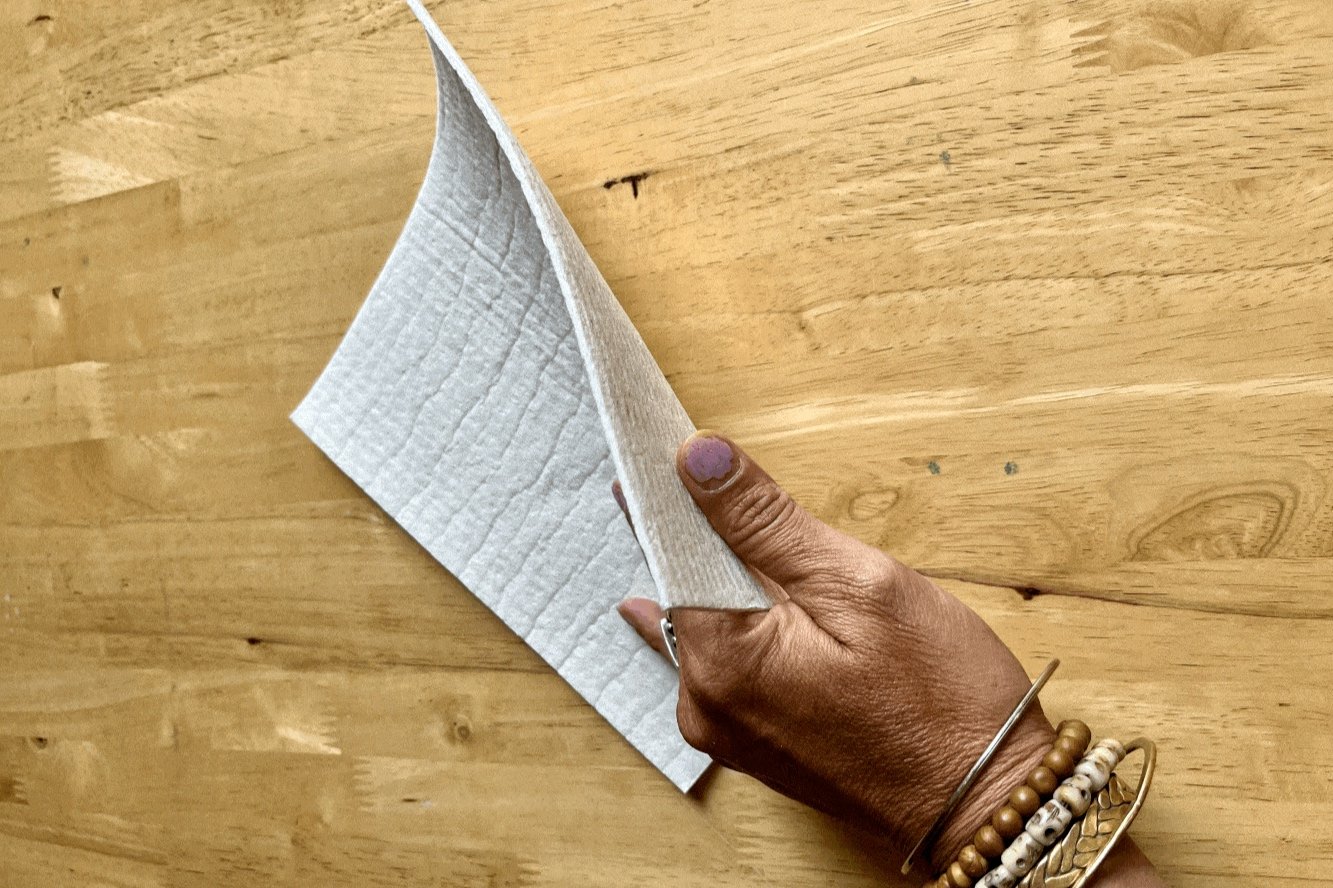It's time to swap out your paper towels
Whether you use paper towels regularly or only break them out for parties and spills—the Swedish dish towel will come in handy. A cloth/paper hybrid, it can take on the messes without all the waste.
Even as the U.S. spends more each year on environmentally friendly goods, we still lead the world in use of paper towels.
According to a 2018 article in The Atlantic, “the U.S. spends nearly as much on paper towels as every other country in the world combined.” And it isn’t just because we have a larger population than many countries. We spend more on paper towels as a whole, and also as individuals.
The U.S. “stands apart on a per capita basis as well. In 2017, the average American spent $17.50 on paper towels. The closest competition on this measure comes from Western and northern Europe, led by Norway at $11.70 per person.”
Of course, that was four years ago. Where do we stand now? The short answer is that we now use more paper towels than in 2018.
Aren’t paper towels compostable?
You might be wondering why this matters. Paper towels are usually compostable and some brands are made with recycled paper. So, doesn’t that make them OK to use?
It’s true that a single paper towel contributes very little to overall environmental decline. It’s also true that the trouble isn’t with an individual paper towel, but with the use of paper towels in the aggregate.
In other words, our collective use of paper towels adds up to a serious environmental problem.
A few facts:
Many paper towels are bleached or colored with chemicals. So, while they are compostable, we don’t want those chemicals in our compost or water supply.
Being compostable does not mean zero waste on its own. Most people do not place used paper towels in compost bins, so they add to landfills where they do compost, eventually.
You can’t recycle a used paper towel back into more paper. So, the resource is not renewable. It requires trees to make more paper towels.
Production of all types of paper requires large amounts of water.
According to the EPA, “Tissue paper and towels (not including bathroom tissue) amounted to 3.8 million tons of waste in 2018.
The bottom line? We use a lot of paper products in our houses, and it takes tons of trees, water, chemicals and more to make, ship, sell and manage their waste.
Paper towels, why can’t we quit you?
Our paper towel habit likely boils down to habit, similar to our plastic bag habit before they were banned or shunned in many cities.
And there’s no denying the convenience of paper towels when it comes to cleaning day, the grossest spills, parties and campouts. Just as most of us became accustomed to reusable grocery bags, we can make the switch away from paper towels.
Here’s the good news—if we just started by cutting our use in half, we’d make a huge difference.
A middle ground swap—the Swedish dishcloth
You might not be ready to go 100 percent paper towel free. We get that. We’ve got a roll stashed around our house too, just in case. As anyone knows who has children, dogs or clumsy people around, some messes beg for the most absorbent and easy to clean (or toss) process.
Enter the Swedish dish cloth. They’re made with an absorbent combination of cellulose and cotton that rivals the spill-cleaning power of the best paper towels. They’re reusable, biodegradable and easy to clean. Just wash them off in warm water for minor cleanup, toss them in the laundry for a deep clean, or boil them to get them back to new.
What makes them “Swedish”? They were invented by a Swedish engineer in the 1940s and have been popular in Sweden and neighboring countries for decades. It looks like the U.S may be starting to catch on.
We’re here for it!
